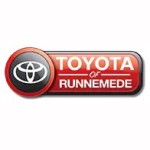What You Should Know About Winter/Snow Tires
Unless you live in Arizona or New Mexico, you probably won't ever need winter/snow tires. But, if you live in a state like California, for instance, and you're an avid snow skier, you may need winter/snow tires seasonally.
At Toyota Of Runnemede Auto Repair Service, we are happy to distribute some helpful information about tires whenever we can, so that's why we're sharing it with our customers in Runnemede and all over NJ.
When snowy weather comes around, drivers all over the U.S. start debating whether or not it's worth investing in a special set of winter/snow tires. With technological advances in all-season tires and with mild winters in some regions, it is a reasonable decision to struggle with.
Before making any decisions, refer to publications such as Consumer Reports that run ongoing tests that consistently show that winter/snow tires feature a better grip to stop and go in snow and icy surfaces.
If you have to operate in snowy conditions, high-quality winter/snow tires will regularly out-perform most all-season and all-terrain tires with superior stopping and starting capabilities. These are viable solutions for all types of vehicles, whether front, rear, or all-wheel drive.
Winter/snow tires can easily be identified with a mountain and snowflake symbol emblazoned directly on the tire's sidewall. Studless winter/snow tires characteristically feature numerous slits in the tread acting as biting edges and a tread compound that stays pliable in frigid temperatures. Studable models offer exemplary snow traction and can be studded to claw ice, though they can be quite noisy and may leave scratch marks in driveways. For enhanced performance in severe weather, winter grip comes with some concessions of potentially shorter tread wear and a modicum of compromise when it comes to handling and grip on cleared roads.
When you are thinking about purchasing winter/snow tires, consider these following suggestions:
Always use four matching winter/snow tires for optimum handling and grip to stop, start and corner on snow-covered roadways.
Always look for the mountain and snowflake symbol indicates that the tires meet an industry-preferred level of snow traction. You might also see the letters M+S (mud and snow) on the sidewall of both winter/snow and all-season tires, but this does not reflect a direct performance prerequisite.
Winter/snow tires will wear faster than all-season tires overall. As a preferred practice, replace winter/snow tires before they wear out. If you are able to remove them at the end of the winter, you might be able to get three or four seasons of good use out of them.
Sources: Consumer Reports, Yahoo and AAA






Social